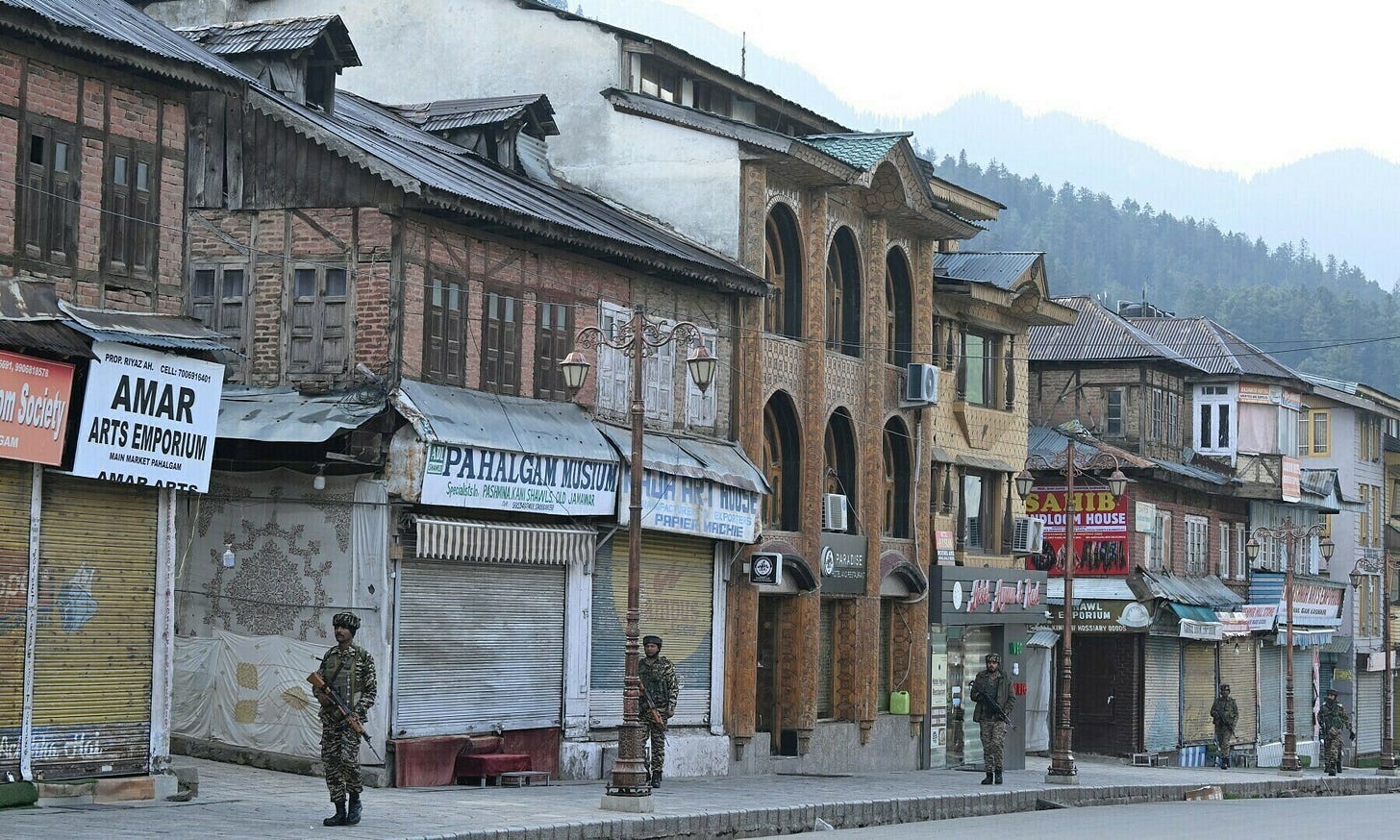Chittisinghpura 2000, Pahalgam 2025
False Flags and Familiar Scripts
In Kashmir's blood-soaked history, two events bear the unmistakable hallmarks of political manipulation: the Chittisinghpura massacre of 2000 and the Pahalgam attack of 2025. These incidents, occurring a quarter-century apart, reveal a disturbing pattern that points to orchestrated violence serving India's geopolitical agenda.
Chittisinghpura Massacre (2000): Manufactured Crisis for Diplomatic Gain
On March 20, 2000, just days before U.S. President Bill Clinton's high-profile visit to India, 36 Sikh men were systematically executed in Chittisinghpura, a village in Kashmir's Anantnag district. The perpetrators wore Indian Army uniforms—a detail that authorities conveniently downplayed. This unprecedented attack on the Sikh community served as a perfect pretext for India's anti-Pakistan diplomatic offensive.
The Indian government wasted no time blaming Pakistan-backed militants, particularly Lashkar-e-Taiba, without presenting credible evidence. What followed exposed the government's desperation to control the narrative: five days later, Indian security forces claimed to have eliminated the "foreign militants" responsible in Pathribal. This narrative collapsed when DNA evidence proved the slain men were innocent local civilians abducted and murdered in cold blood—victims of a staged encounter designed to fabricate closure.
The state's brutal response to subsequent protests in Barakpora—where seven civilians were gunned down for demanding justice—revealed the lengths to which authorities would go to suppress dissent and preserve their fabricated account. These killings represented not isolated incidents but a coordinated campaign to manipulate public opinion and international perception during a critical diplomatic window.
Despite this bloodshed occurring directly before his visit, President Clinton maintained diplomatic neutrality—effectively giving India a pass on accountability while civilians paid with their lives.
Pahalgam Attack (2025): Convenient Catastrophe
History repeated itself on April 22, 2025, when gunmen attacked tourists near Pahalgam in the same Anantnag district. Again, the assailants reportedly wore military-style uniforms and targeted non-Muslims with chilling precision, killing 28 people including foreign nationals. The attackers allegedly conducted religious tests to spare Muslims—a theatrical element that perfectly served the government's narrative of Islamic extremism.
The government immediately pointed to The Resistance Front, conveniently described as a LeT offshoot, without waiting for a thorough investigation. This attack—occurring precisely during U.S. Vice President JD Vance's visit—provided the Modi administration with a tailor-made justification for escalating tensions with Pakistan.
India's response was swift and severe: closing borders, suspending the vital Indus Waters Treaty, and withdrawing diplomats from Islamabad. Prime Minister Modi and Home Minister Shah seized the opportunity for bellicose rhetoric, focusing on retribution rather than investigation, transparency, or genuine security reform.
Unmistakable Patterns: Questions That Demand Answers
1. Suspicious Timing:
Both attacks occurred during visits by high-ranking U.S. officials when India sought to portray Pakistan as a sponsor of terrorism.
Both provided immediate political capital for India's diplomatic agenda, shifting international narratives at precisely calculated moments.
2. Selective Targeting:
Both incidents targeted specific communities that would generate maximum outrage and international sympathy.
Both attacks deviated from typical militant patterns, focusing on civilians rather than security forces—conveniently aligning with government propaganda needs.
3. Hasty Attribution:
In both cases, authorities rushed to blame Pakistan-linked groups before forensic evidence could be collected or analyzed.
The government consistently suppressed alternative theories and punished those questioning official narratives.
4. Profitable Outcomes:
Both incidents delivered immediate diplomatic advantages for India.
Both justified military buildups and harsh policies in Kashmir while deflecting scrutiny from the government's own human rights record in the region.
Beyond Coincidence: The Perpetual Utility of Crisis
The recurrence of such perfectly timed attacks raises profound questions about state involvement or exploitation. While militant activity exists in Kashmir, the precision with which these incidents serve India's geopolitical objectives cannot be dismissed as mere coincidence.
The Modi government's aggressive response to the Pahalgam attack—while refusing independent investigation—mirrors the pattern established in Chittisinghpura, where subsequent revelations pointed to fabricated evidence and civilian casualties at the hands of security forces.
These cases expose the cynical exploitation of tragedy to advance political agendas and suppress Kashmiri self-determination. Each attack serves to justify increasingly draconian measures in the region while providing cover for demographic engineering following the revocation of Article 370.
Until independent international investigations are permitted and perpetrators held accountable regardless of state affiliation, Kashmir will remain trapped in this cycle of manipulated violence and manufactured narratives—where civilian lives become expendable props in a geopolitical theater.



